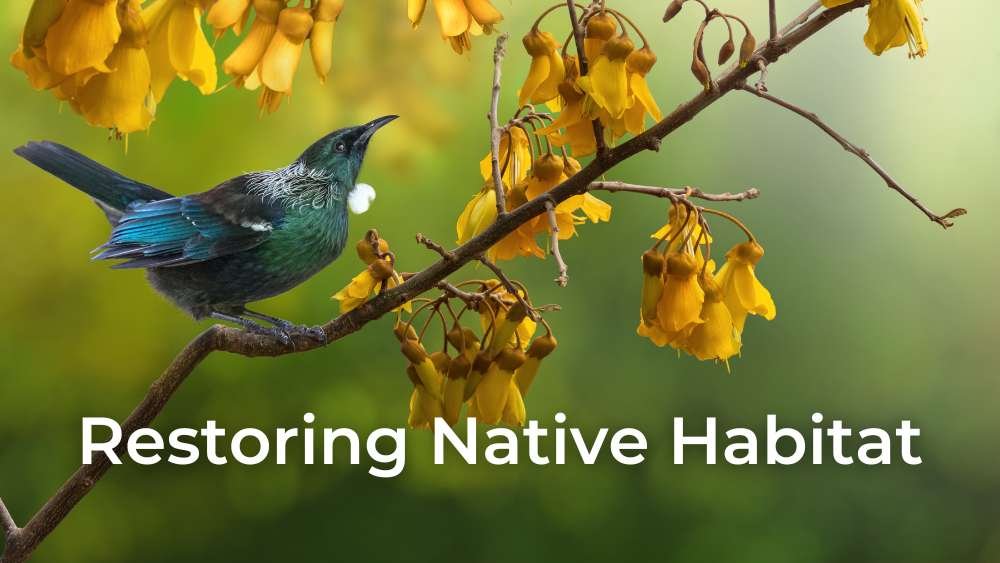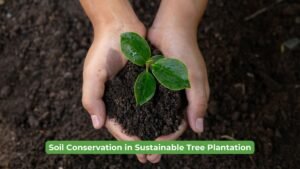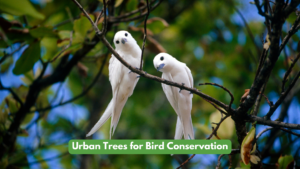India’s rich biodiversity has earned it a place among the world’s top mega-diverse countries. However, over the years, rapid urbanization, deforestation, and various forms of human intervention have led to the degradation of native habitats, posing a significant threat to the nation’s unique ecosystems.
Restoring native habitats holds paramount importance in safeguarding India’s natural heritage and ensuring the well-being of both wildlife and communities.
In this blog post, we delve into seven critical reasons why restoring native habitats is crucial in India.
1. Biodiversity Conservation
Native habitats provide a home for a diverse array of plant and animal species, many of which are endemic and found nowhere else on Earth. Restoring native habitats helps support the life cycles of various species including breeding, nesting, feeding, and migration.
Many species are highly specialized and dependent on specific habitat conditions. By restoring native habitats, we provide a lifeline for these species, reducing their risk of extinction due to habitat loss.

By restoring these habitats, we can preserve these unique species, contributing to global biodiversity and maintaining the delicate balance of ecosystems. A diverse ecosystem provides important services such as pollination, pest control, and nutrient cycling, which contribute to ecosystem health and stability.
Native habitats perform vital ecological functions, such as water filtration, soil stabilization, and carbon sequestration. Restoration helps these functions recover, benefiting both biodiversity and overall ecosystem health.
2. Ecosystem Services
The restoration of native habitat plays a significant role in enhancing and supporting ecosystem services, which are the valuable benefits that natural ecosystems provide to both humans and the environment.
Restored native habitats, such as meadows and wildflower areas, attract pollinators like bees, butterflies, and birds. These pollinators play a critical role in fertilizing crops, leading to increased agricultural productivity.
Healthy native habitats, particularly wetlands, forests, and grasslands, help regulate water flow and reduce the risk of flooding. They act as natural sponges, absorbing excess water during heavy rainfall and releasing it gradually, thus minimizing flood impacts.
Native vegetation also filters and purifies water as it percolates through the soil, reducing pollutants before they reach water bodies. This enhances water quality and supports clean drinking water sources. Native plant communities have intricate root systems that stabilize soil and prevent erosion.
Restoring vegetation in areas prone to erosion, such as riverbanks and coastal zones, helps maintain soil structure and prevents sedimentation in water bodies.
3. Climate Change Mitigation
Restoration of native habitat plays a significant role in climate change mitigation by contributing to efforts aimed at reducing greenhouse gas emissions, enhancing carbon sequestration, and increasing ecosystem resilience.
Healthy native habitats, such as forests, wetlands, and grasslands, are effective carbon sinks, meaning they absorb and store carbon dioxide (CO2) from the atmosphere.

Restoration efforts, like reforestation and wetland restoration, increase the capacity of ecosystems to capture and store carbon, helping to offset carbon emissions from human activities.
Restoration projects can prevent or reduce greenhouse gas emissions that result from land degradation, deforestation, and habitat destruction. By restoring natural habitats, we decrease the release of stored carbon into the atmosphere. Native habitats influence local microclimates, including temperature and humidity.
Forest restoration, for example, can create cooler and more humid conditions, which may mitigate the urban heat island effect in cities.
4. Preventing Soil Erosion
Native vegetation plays a crucial role in preventing soil erosion by stabilizing the soil with its root systems. Restoring native habitats helps retain soil structure, prevent landslides, and maintain fertile lands for sustainable agriculture.
Native plants, with their deep and complex root systems, help stabilize soil. These roots bind the soil particles together, reducing the risk of erosion caused by water and wind.
Dense vegetation cover, typical of native habitats, acts as a natural barrier against the impact of rainfall, preventing soil from being washed away. As native plants shed leaves and other organic materials, they contribute to the accumulation of organic matter on the soil surface.
This organic matter improves soil structure, water-holding capacity, and erosion resistance.
5. Supporting Indigenous Communities
Native habitats often hold cultural significance for indigenous communities, representing ancestral lands and serving as spaces for traditional practices, ceremonies, and cultural events.
Restoring these habitats helps preserve and revitalize cultural heritage. Many indigenous communities have deep relationships with their local ecosystems, relying on them for food, medicines, materials for crafts, and other resources.
Habitat restoration can help re-establish these resources, contributing to community well-being and cultural continuity. Restoration efforts can lead to improved availability of traditional foods, such as wild plants and animals, which are vital for subsistence livelihoods.
This can reduce reliance on external sources and strengthen community resilience.
6. Water Management
Native habitats, such as wetlands and riparian zones (areas along rivers and streams), act as natural filters. They can trap sediment, absorb pollutants, and promote the breakdown of contaminants, improving water quality before it enters water bodies.
Restored wetlands and floodplains act as natural buffers during heavy rainfall events or floods. They can absorb excess water, slow down its movement, and reduce the risk of downstream flooding.

Healthy native habitats can store water during wet periods and release it slowly during dry spells, helping to maintain consistent water flow in rivers and streams during droughts. Wetlands, for example, can retain water even during dry periods, serving as valuable water reservoirs.
7. Tourism and Education
Restored native habitats create visually appealing and diverse landscapes that attract nature enthusiasts, birdwatchers, and eco-tourists. These tourists are drawn to the opportunity to observe and appreciate local flora and fauna.
Restored native habitats often provide recreational spaces for activities like hiking, nature walks, photography, and wildlife observation. Such activities can boost tourism by attracting outdoor enthusiasts seeking immersive nature experiences. Ecotourism operators can offer educational tours and guided walks in restored habitats.
These tours educate visitors about the importance of biodiversity conservation, ecological processes, and the significance of native species.
Conclusion
The restoration of native habitats is not just an ecological endeavor; it is a commitment to preserving India’s natural legacy for current and future generations.
By recognizing the critical reasons behind habitat restoration, we can prioritize conservation efforts, implement sustainable practices, and work collaboratively to reclaim the splendor of India’s diverse ecosystems.
Through these collective actions, we can restore the delicate balance of nature, protect our invaluable biodiversity, and secure a healthier and more sustainable future for both the environment and human communities.
Written by Saili Sabnis from Nelda. Images have the copyrights of the respective sources.




